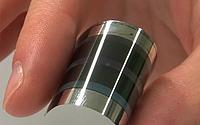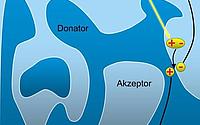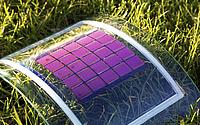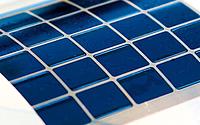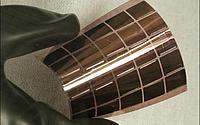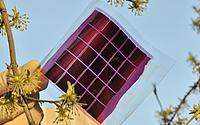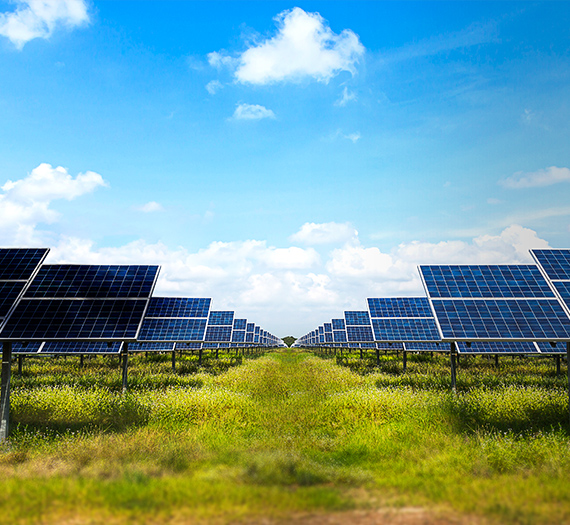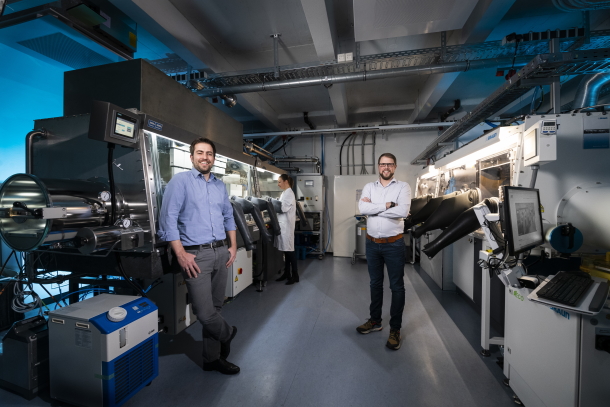- Energy
- Climate, Environment & Health
ELECTRICITY FROM THE FACADE OF A HOUSE

The facade shines in beautiful colors, the windows let in light and the roof blends in with the architecture. Hardly anything indicates that the entire house is equipped with solar cells and that every hour of sunlight is used to produce electricity. Entire streets and urban surfaces serve as a power plant. This vision of a "better city" is outlined by Ph. D. Alexander Colsmann from the Light Technology Institute at KIT. With his team, he is researching organic solar cells that could change the way buildings are used.
To make his forward-looking ideas come true, solar cells need to be bendable, color-adjustable or translucent, wafer-thin and producible in a printing process on a large scale. "This is precisely where we see our task: to develop plastic-based solar cells that are designed for very different applications," says physicist Colsmann. For example, solar modules for windows would have to be translucent, while more colorful and weatherproof solar cells could be used on facades.
"Many small steps are still needed to make this possible. Research groups around the world are dealing with all kinds of questions about this research complex, from the selection of the appropriate polymer to the layer-by-layer construction of the cells to newspaper-style printing," explains Colsmann. His interdisciplinary team of researchers in Karlsruhe is taking up requirements from industry and academia and developing an in-depth understanding of the individual issues. In this way, they approach a complete production process with the goal of a marketable product.
About 40 people, scientists and students, are working on this topic at the Light Technology Institute, including Stefan Gaertner, a doctoral student. "Until now, one of the reasons the technology has not been economically interesting is that toxic and environmentally harmful solvents are often still used in laboratory-scale printing processes. These would evaporate in large quantities during large-scale production. In a new process, we are now completely dispensing with such solvents and can already produce cells that exhibit comparable efficiencies. The goal is to produce solar cells from water or alcohol in an environmentally friendly and economical process."
The new technology is not intended to replace the rigid photovoltaic systems on silicon substrates that have been used to date, but to move into previously unoccupied market niches. In addition to the use as a design and power plant element on buildings and public spaces, the new form of sunlight utilization could also be used for off-grid power supply in textiles, for example in functional clothing for mountaineers and anyone who needs small amounts of electricity for mobile consumer devices. It is also conceivable to use them as foils on vehicles to support the power supply for on-board electronics or to supply energy for emergency systems, traffic and navigation aids.
To make organic photovoltaics competitive, the efficiency of organic solar cells must be increased to well over ten percent. For this purpose, researchers from KIT are developing so-called tandem architectures. "To produce an efficient organic solar cell, it needs several different light-absorbing layers. This way, the entire spectrum of incident sunlight can be used with one cell," explains Daniel Bahro, who specializes in researching layer compositions in Colsmann's team. The challenge is to determine the correct layer thicknesses for a cell and to apply the layers to the polymer substrate in the correct sequence so that they do not mix and do not negatively affect each other. It's a complicated process that already works in the lab but still needs to be designed on a large scale.
"Behind every question in our research field are highly complex relationships and every solution to a problem leads to a new set of questions. Nevertheless, we are convinced that the overall product will work in a few years," says Alexander Colsmann. "This research makes sense because there is no way around using the sun as an energy source in the future."
"We believe in making a realistic contribution to a better future with our research on renewable energies."
Further Links
Images: KIT
